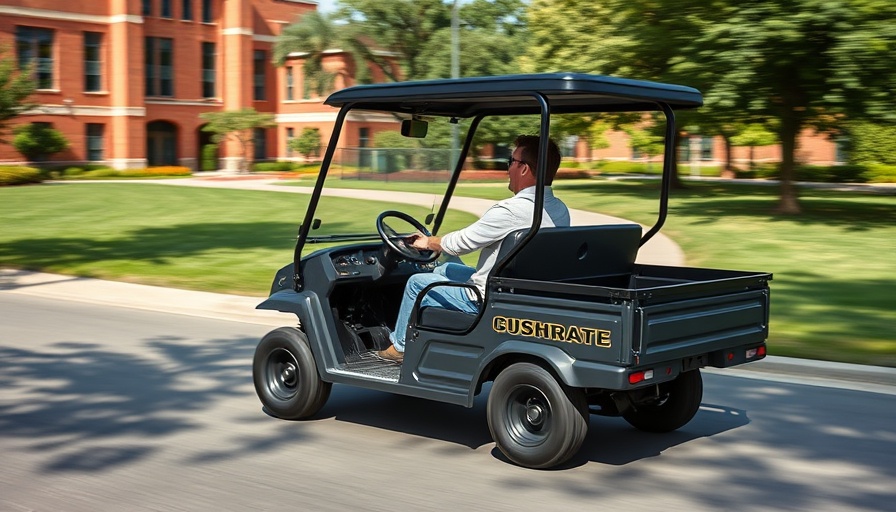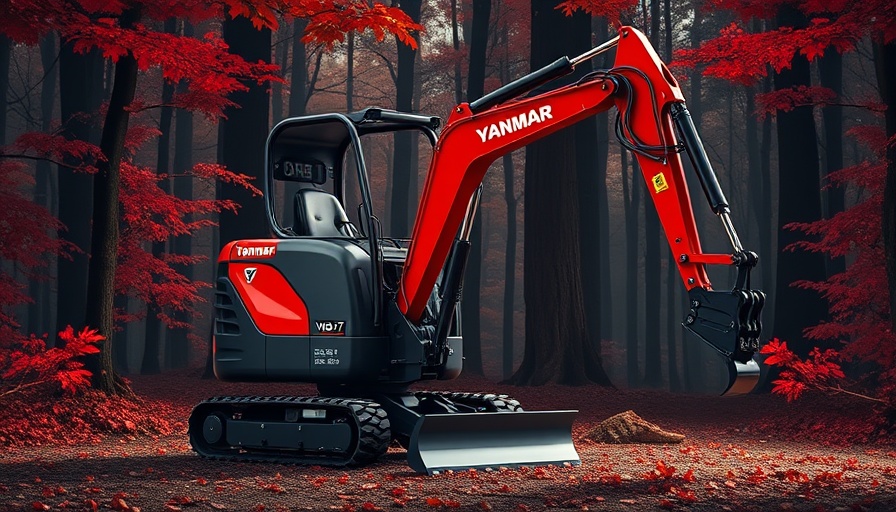
Cushman Hauler XL: A Game Changer in Utility Vehicles
The newly unveiled Cushman Hauler XL is redefining what utility vehicles can do, particularly when it comes to size, capacity, and performance. This UTV is designed with a robust, truck-inspired structure featuring an impressive 68.5-inch aluminum flatbed that allows for maximum hauling capability, making it ideal for contractors and DIY enthusiasts alike. With a bed load capacity of 1,200 pounds and an overall payload capacity of 1,600 pounds, the Hauler XL is engineered to tackle some of the most demanding tasks.
Powerful Options: Gasoline vs. Electric
One of the standout features of the Cushman Hauler XL is its versatility in powertrain options. Users can choose between a fully electric Elite series, which utilizes Samsung SDI lithium-battery technology, or a traditional gasoline-powered model with a robust 13.5-horsepower engine. The electric models, in particular, stand out for their ease of maintenance, offering a five-year battery warranty and features designed for user convenience such as an automatic parking brake.
The Street-Legal Advantage
Another compelling feature of the Hauler XL is its street-legal capability. Designed for urban and suburban environments, the Elite model can navigate roads with speed limits up to 35 mph, making it a practical option for contractors who need to transport materials across short distances. By meeting federal safety standards, users can confidently drive their UTV on public roads, blending functionality with compliance.
Durability Meets Functionality
Built with a welded steel frame coated with DuraShield powder, the Cushman Hauler XL is designed to withstand harsh working conditions while remaining lightweight and manageable. Its injection-molded TPO body provides additional durability and is available in a variety of colors, including Forest Green, Patriot Blue, and Flame Red, allowing users to personalize their vehicles.
Insights on Maintenance and Upgrades
Just because it’s rugged doesn’t mean the Hauler XL isn’t user-friendly. The design includes opportunities for personalization with upgrades like steel drop sides or an aluminum box bed, offering solutions tailored to varied job requirements. Maintenance is minimal for the Elite model, emphasizing ease rather than excessive upkeep, which is crucial for professionals who need to maximize their efficiency on the job site.
Comparative Analysis: Where Does the Hauler XL Stand?
In a market filled with utility vehicles, the Cushman Hauler XL stands out for its bed size, payload capacity, and user-friendly features. Competitors often lack the combination of electric power while still providing a gasoline option, often making trade-offs that impact performance or usability. The Hauler XL's focus on addressing the needs of its user base significantly contributes to its status as an industry leader.
Conclusion: Why Invest in the Hauler XL?
If you’re a contractor or a DIY enthusiast considering upgrading your hauling capabilities, the Cushman Hauler XL presents an intelligent investment. Its combination of power, efficiency, and stylish durability makes it a top choice in the UTV market. With features that cater to both electric and gasoline lovers, this versatile vehicle could easily become a staple on work sites and in homes alike.
Please visit your local dealer or the Cushman website to learn more about how the Hauler XL can transform your hauling routines today.
 Add Row
Add Row  Add
Add 




Write A Comment